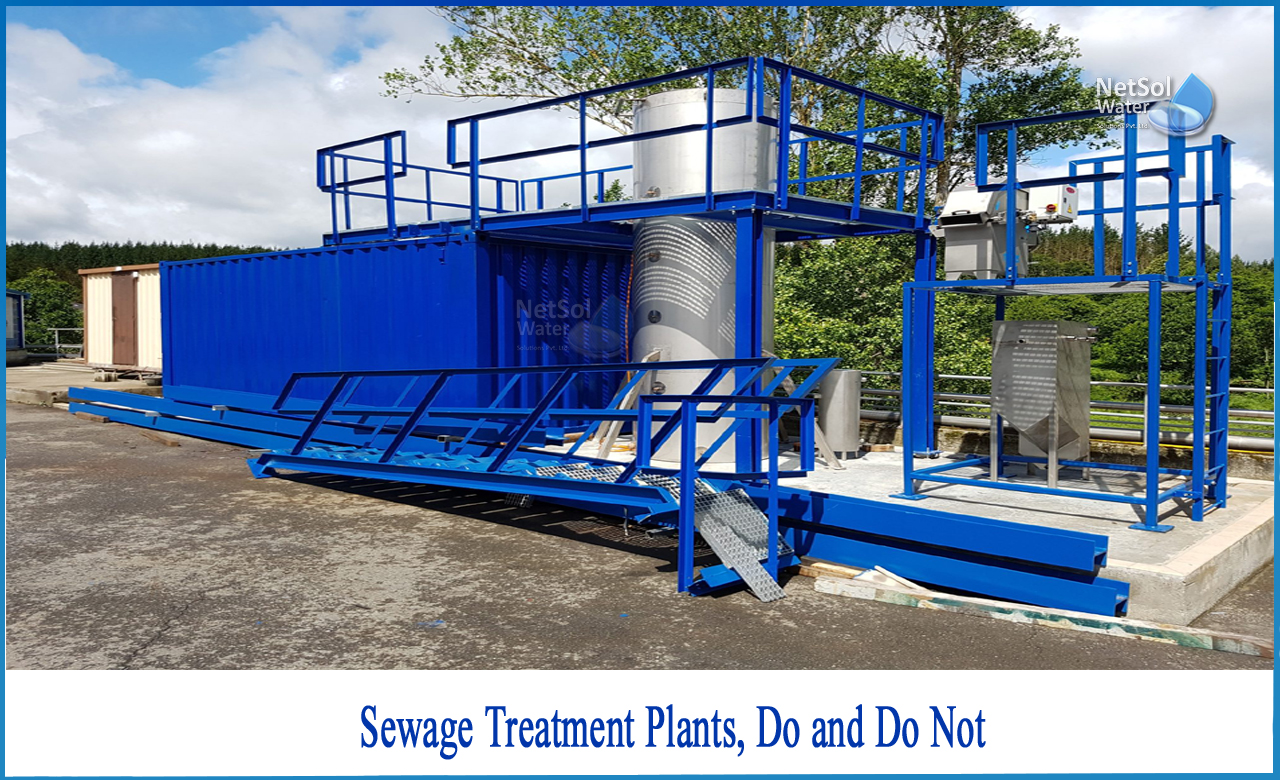What are Do and Do Not with STP?
Sewage treatment (also known as domestic wastewater treatment or municipal wastewater treatment) is a type of wastewater treatment that removes contaminants from sewage to produce an effluent that is appropriate for discharge to the environment or reuse, preventing water pollution from raw sewage discharges.
Sewage is a mixture of wastewater from homes and businesses, as well as perhaps pre-treated industrial wastewater. There have been numerous sewage treatment technologies created, the majority of which use biological treatment processes.
Engineers and decision-makers must examine technical and economic criteria, as well as quantitative and qualitative qualities of each alternative, when choosing a suitable technology. The examples of frequently used selection criteria are desired effluent quality, anticipated construction &operation costs, land availability, energy requirements, and sustainability considerations. Sewage is commonly handled on-site by various on-site sanitation systems in developing countries and rural areas with low population densities, rather than being carried through sewers.
Caring of Sewage Treatment Plants
Do’s
1: When using household cleaning products, follow the manufacturer's recommended doses for the water type. Hard water necessitates a much higher detergent concentration than soft water.
2: To avoid overloading of the treatment plant, use cleaning agents sparingly and frequently.
3: In washing machines and dishwashers, use liquids rather than granules. Powders re-coagulate, forming clumps that can clog pipes.
4: Attempt to spread all laundries out over the course of the week.
5: Stick to the same washing, dishwasher, and other cleaning items you've always used because the bacteria will function more efficiently on products it's used to.
6: Consider what is being put down the sink, toilet, or drains.
7: When necessary, de-sludge the plant.
8: Ensure that only toilet paper is flushed and that it is used in appropriate amounts.
9: While being away or on vacation, leave the plant on. The plant's engine and moving parts may get damaged, and the biomass may get killed, if it is turned off.
10: Compost all of the organic food waste or use only local council's biodegradable trash recycling programme (if available).
11: Organic waste should not be flushed down the sink or drain.
Donot’s
1: Sanitary towels, tampons, cotton wool or cotton wool buds, incontinence pads, or any baby, cleaning, or facial wipes should not be flushed into the toilet.
2: Rubber and other non-biodegradable items should not be flushed down the toilet.
3: Pour no fat, grease, or cooking oil down the drain or into the sink. The germs are suffocated by fats, and the biological process is slowed. Milk, wine, and beer, for example, add to the organic load and should not be disposed of through the wastewater system.
4: Neither neat disinfectant nor bleach should be used. These products should only be used at the lowest feasible concentrations, as they can limit the plant's ability to develop biomass.
5: Medicine, mouthwash, and other chemicals such as photographic fluid or garden products (e.g.- insecticides, weed killers, and fungicides) should not be poured down the drain because they will harm the biological treatment process.
6: Pouring DIY chemicals (paint, thinners, turpentine, and white spirit, for example) or automobile fluids (engine oil, anti-freeze, brake fluid, and so on) down the drains is not a good idea.
7: Allow no rainwater, groundwater, or huge amounts of water (such as from a pool or Jacuzzi) to enter the plant. Chlorine kills bacteria, and too much water increases the flow rate through the plant, reducing the amount of time available for treatment.
8: Installing a garbage disposal under your kitchen sink is not a good idea. Disposing of organic waste through the treatment system increases the organic load, which leads to bacterial proliferation, which stymies the treatment process. If your facility is specifically designed to accommodate greater organic loads, only use a waste disposal unit.
Conclusion
The overall purpose of sewage treatment is to produce an effluent that can be discharged into the environment with little water contamination or that can be reused in a useful manner. This is performed by removing contaminants from the sewage. Transforming dissolved and particulate biodegradable components into acceptable end products, transforming and removing nutrients, removing of inactivate pathogenic organisms, and removing specific trace organic constituents are some of the treatment objectives for biological sewage treatment (micropollutants).




